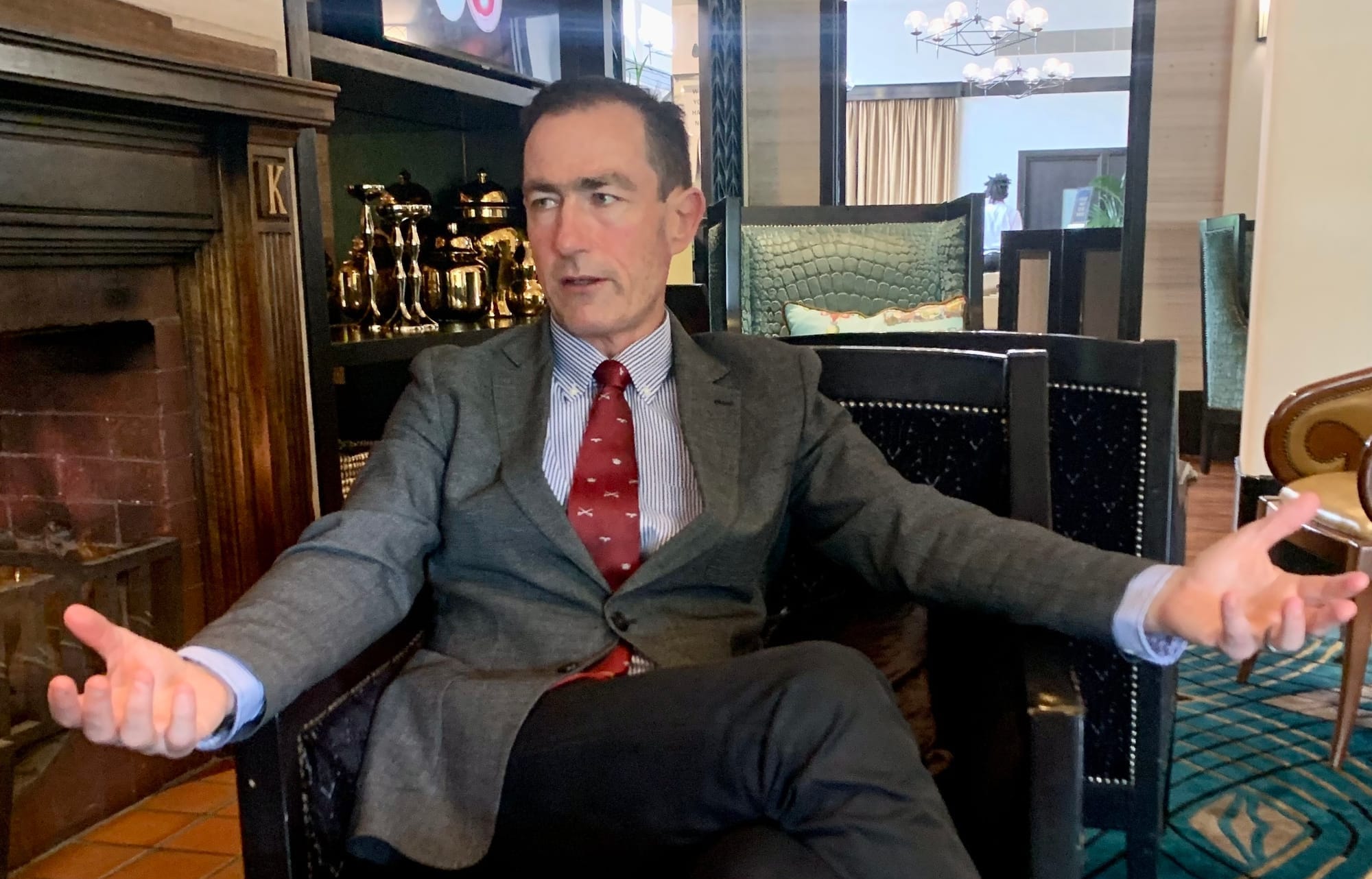Covert Contact 76: Australian Special Operations Forces
A deep dive into Australia's evolving security landscape and special operations capabilities, exploring how geographic isolation has given way to global vulnerability and how the U.S.-Australian alliance forms a critical foundation for addressing emerging threats in an increasingly unstable world.

Colonel Ian Langford, DSC (Two Bar), has served the Australian Army and Special Operations Command, with distinction, for over two decades. He has served in the Solomon Islands, East Timor, Bougainville, Israel, Iraq, Lebanon, Syria, and Afghanistan where he was recognized with the Distinguished Service Cross for distinguished command and leadership in action as Officer Commanding Alpha Commando Company Group in the Special Operations Task Group, Operation SLIPPER. He is a Distinguished Graduate of the United States Marine Corps Command and Staff College and the School of Advanced Warfighting. He is currently a Visiting Fellow at Charles Sturt University.
I recently had the opportunity to speak with Colonel Ian Langford of the Australian Army about Australia's special operations capabilities and the shifting security landscape we're both navigating. Our conversation revealed fascinating insights into how Australia's military operates within global security frameworks and the unique challenges faced by a nation with such distinctive geography.
The Evolution of Australian Security
Ian offered a compelling perspective on how Australia's security mindset has evolved. What once was the "tyranny of distance" – Australia's geographic isolation serving as a natural defense – has transformed into what he calls the "tyranny of proximity" in our globalized world. Technology and interconnectedness have effectively eliminated the protective buffer of geography.
"Our geography, which was once something that we took for granted as a means of national defense, has quickly disappeared as globalization and technology has meant that we all now essentially live in one global village," Ian explained. "An incident in Paris can have national security implications all the way down here in Australia."
This evolution mirrors the American experience. Both nations historically benefited from oceans separating us from potential adversaries. For Australia, this illusion was shattered when Singapore fell to Japanese forces in World War II – a wake-up call that the Royal Navy couldn't protect them. This realization catalyzed Australia's shift toward the ANZUS alliance with the United States in 1951, forming the bedrock of their defense policy since.
Australia's 9/11 Moment
While the United States had its seismic shift after September 11th, Australia experienced its own transformative moment in October 2002 with the Bali bombings. Ian described this tragedy, which killed 202 people including 89 Australians, as "the greatest loss of life in a single overseas incident since the Second World War."
This attack, coming on the heels of 9/11, demonstrated to Australians that their national security framework needed radical adaptation to counter emerging threats. The bombings forced a recalibration of resources, policies, and mandates to develop solutions commensurate with these new dangers.
Australian Special Operations Forces
Ian provided valuable insights into Australia's special operations capabilities. Their structure includes two primary regiments – the Special Air Service Regiment (focused on intelligence collection) and the 2nd Commando Regiment (specializing in larger-scale direct action missions). These are supported by the Special Operations Engineer Regiment, which provides CBRE and technological capabilities essential for evidence-based operations.
Additionally, the 1st Commando Regiment serves as a reserve unit, similar to the U.S. 10th Group, allowing retention of trained personnel who leave active service. A Special Operations Training and Education Centre oversees professional military education.
While modest in size compared to U.S. forces, Australian special operations units maintain impressive capabilities and work within a clear legal framework. Unlike the U.S. with its posse comitatus restrictions, Australian law specifically enables military forces to respond to domestic counterterrorism contingencies when appropriate – similar to the Westminster model used in the UK.
The U.S.-Australia Alliance
One thing that struck me during our conversation was how deeply the U.S.-Australian security relationship runs. Ian shared that his personal experience studying at the U.S. Marine Corps Command and Staff College created relationships that later had operational impacts – exactly as intended.
"We have Americans that take time out to spend two years here in both our education centers and our institutions. And there's the capacity to have Americans deploy alongside Australians and vice versa," Ian noted. These exchanges transform capabilities from single-nation contributions into multiplied experiences, worldviews, and influences toward achieving common outcomes.
Future Threats and Challenges
Looking ahead, Ian identified four primary concerns: increasing ungoverned and fragile spaces; transnational terrorism coupled with proliferation of weapons of mass effect; the rise of "hyper-empowered" individuals operating for ideological groups or the highest bidder; and hostile state and non-state campaigns that destabilize rule-based systems.
This final concern particularly resonates – actors who don't need formal declarations of war or clear political objectives, but simply seek to create instability that separates citizens from their governments.
"The challenge for governments such as ours and yours is to develop systems – the policy, the resources, and the mandate within their own bureaucracies – that can generate superior tempo relative to those threats," Ian explained. Outpacing these complex adversaries requires defining them appropriately and applying resources judiciously.
Perspective Amid Challenges
Despite these sobering assessments, Ian emphasized the importance of perspective. He reminded me that the world faced even greater precariousness a century ago during and after World War I. The difference today isn't necessarily the nature of conflict – "the nature of war doesn't change, which is really an edict on man doesn't change" – but rather the "scale and speed of change" enabled by hyperconnectivity.
As we concluded our conversation, Ian emphasized the importance of collective action and public discourse in addressing these challenges. Just as humanity has nearly eradicated smallpox and addressed the ozone problem through collaborative efforts, our alliance frameworks and technology-enabled connections can help solve today's security challenges if we remain engaged in the debate.
I found his final thoughts particularly powerful. "I don't for a moment think this work stops at any stage in your military career. I just think there's a responsibility incumbent on all of us to be part of the debate, to understand the issues, and continue to encourage our leaders and policymakers to communicate and share with us some of their challenges so we can help solve them."
